Optimization of Different Deployments and Resolution of Antenna Arrays in SWIPT
Abstract
:1. Introduction
2. System Model
3. Evolution Algorithm
- Step 1. In the first step, we randomly initiate the parameter of the population for the antenna array. There are d dimensional adjustment parameters in each population.
- Step 2. According to the p-th population’s parameters, calculate the objective function value and update the best value of the population.
- Step 3. Mutate the trial vector based on the control vector and adjust the control vector for the next generation.
- Step 4. By the presetting probability, decide whether the crossover mechanism is needed to start. If starting the mechanism, we compare the crossover objective value with the former objective value.Step 5. Update the position of the global best population.
- Step 6. According to the total number of populations and the number of generations, go to step 2 or stop operating the algorithm.
4. Numerical Results
5. Conclusions
Author Contributions
Funding
Conflicts of Interest
References
- Ghosh, A.; Maeder, A.; Baker, M.; Chandramouli, D. 5G Evolution: A View on 5G Cellular Technology beyond 3GPP Release 15. IEEE Access 2019, 7, 127639–127651. [Google Scholar] [CrossRef]
- Agrawal, S.K.; Sharma, K. 5G millimeter wave (mmWave) communications. In Proceedings of the 2016 3rd International Conference on Computing for Sustainable Global Development (INDIACom), New Delhi, India, 16–18 March 2016; pp. 3630–3634. [Google Scholar]
- Ansari, R.I.; Chrysostomou, C.; Hassan, S.A.; Guizani, M.; Mumtaz, S.; Rodriguez, J.; Rodrigues, J.J. 5G D2D Networks: Techniques, Challenges, and Future Prospects. IEEE Syst. J. 2018, 12, 3970–3984. [Google Scholar] [CrossRef]
- Shafique, K.; Khawaja, B.A.; Sabir, F.; Qazi, S.; Mustaqim, M. Internet of Things (IoT) for Next-Generation Smart Systems: A Review of Current Challenges, Future Trends and Prospects for Emerging 5G-IoT Scenarios. IEEE Access 2020, 8, 23022–23040. [Google Scholar] [CrossRef]
- Zhou, B.; Liu, A.; Lau, V. Successive Localization and Beamforming in 5G mmWave MIMO Communication Systems. IEEE Trans. Signal Processing 2019, 67, 1620–1635. [Google Scholar] [CrossRef]
- Zhao, X.; Du, F.; Geng, S.; Sun, N.; Zhang, Y.; Fu, Z.; Wang, G. Neural network and GBSM based time-varying and stochastic channel modeling for 5G millimeter wave communications. China Commun. 2019, 16, 80–90. [Google Scholar] [CrossRef]
- Park, J.J.; Moon, J.H.; Lee, K.-Y.; Kim, D.I. Transmitter-Oriented Dual-Mode SWIPT with Deep-Learning-Based Adaptive Mode Switching for IoT Sensor Networks. IEEE Internet Things J. 2020, 7, 8979–8992. [Google Scholar] [CrossRef]
- Lai, G.D.; Chiu, C.C.; Cheng, Y.T. BER reduction for ultra wideband multicasting system by beamforming techniques. J. Appl. Sci. Eng. 2018, 21, 587–594. [Google Scholar]
- Chiu, C.C.; Chen, C.H.; Cheng, Y.T.; Lee, Y.L.; Chou, Y.K. Beamforming Techniques at Both Transmitter and Receiver for Indoor Wireless Communication. J. Appl. Sci. Eng. 2018, 21, 407–412. [Google Scholar]
- Zhang, J.; Zheng, G.; Krikidis, I.; Zhang, R. Fast specific absorption rate aware beamforming for downlink SWIPT via deep learning. IEEE Trans. Veh. Technol. 2020, 69, 16178–16182. [Google Scholar] [CrossRef]
- Lee, K.; Lee, W. Learning-Based Resource Management for SWIPT. IEEE Syst. J. 2020, 14, 4750–4753. [Google Scholar] [CrossRef]
- Zhang, Z.; Lu, Y.; Huang, Y.; Zhang, P. Neural Network-Based Relay Selection in Two-Way SWIPT-Enabled Cognitive Radio Networks. IEEE Trans. Veh. Technol. 2020, 69, 6264–6274. [Google Scholar] [CrossRef]
- Hu, Z.; Xie, D.; Jin, M.; Zhou, L.; Li, J. Relay Cooperative Beamforming Algorithm Based on Probabilistic Constraint in SWIPT Secrecy Networks. IEEE Access 2020, 8, 173999–174008. [Google Scholar] [CrossRef]
- Li, Q.; Yang, L. Robust Optimization for Energy Efficiency in MIMO Two-Way Relay Networks with SWIPT. IEEE Syst. J. 2020, 14, 196–207. [Google Scholar] [CrossRef]
- Liu, F.; Liu, Y.; Liu, Y.; Yu, J. Secure Beamforming in Full-Duplex Two-Way Relay Networks with SWIPT for Multimedia Transmission. IEEE Access 2020, 8, 26851–26862. [Google Scholar] [CrossRef]
- Luo, J.; Tang, J.; So, D.K.; Chen, G.; Cumanan, K.; Chambers, J.A. A Deep Learning-Based Approach to Power Minimization in Multi-Carrier NOMA with SWIPT. IEEE Access 2019, 7, 17450–17460. [Google Scholar] [CrossRef]
- Qi, Q.; Chen, X.; Ng, D.W.K. Robust Beamforming for NOMA-Based Cellular Massive IoT with SWIPT. IEEE Trans. Signal Processing 2020, 68, 211–224. [Google Scholar] [CrossRef]
- Sun, X.; Yang, W.; Cai, Y.; Wang, M. Secure mmWave UAV-Enabled SWIPT Networks Based on Random Frequency Diverse Arrays. IEEE Internet Things J. 2021, 8, 528–540. [Google Scholar] [CrossRef]
- Wang, X.; Gursoy, M.C. Coverage Analysis for Energy-Harvesting UAV-Assisted mmWave Cellular Networks. IEEE J. Sel. Areas Commun. 2019, 37, 2832–2850. [Google Scholar] [CrossRef] [Green Version]
- Sun, X.; Yang, W.; Cai, Y. Secure Communication in NOMA-Assisted Millimeter-Wave SWIPT UAV Networks. IEEE Internet Things J. 2020, 7, 1884–1897. [Google Scholar] [CrossRef]
- Khan, T.A.; Alkhateeb, A.; Heath, R.W. Millimeter Wave Energy Harvesting. IEEE Trans. Wirel. Commun. 2016, 15, 6048–6062. [Google Scholar] [CrossRef] [Green Version]
- Liu, R.; Li, H.; Guo, Y.; Li, M.; Liu, Q. Hybrid Beamformer Design with Low-Resolution Phase Shifters in MU-MISO SWIPT Systems. In Proceedings of the 2018 10th International Conference on Wireless Communications and Signal Processing (WCSP), Hangzhou, China, 18–20 October 2018; pp. 1–6. [Google Scholar]
- Hao, W.; Sun, G.; Chu, Z.; Xiao, P.; Zhu, Z.; Yang, S.; Tafazolli, R. Beamforming Design in SWIPT-Based Joint Multicast-Unicast mmWave Massive MIMO With Lens-Antenna Array. IEEE Wirel. Commun. Lett. 2019, 8, 1124–1128. [Google Scholar] [CrossRef]
- Tang, J.; So, D.K.C.; Zhao, N.; Shojaeifard, A.; Wong, K. Energy Efficiency Optimization with SWIPT in MIMO Broadcast Channels for Internet of Things. IEEE Internet Things J. 2018, 5, 2605–2619. [Google Scholar] [CrossRef] [Green Version]
- Chiu, C.C.; Tong, Y.X.; Cheng, Y.T. Comparison of SADDE and PSO for Smart Antennas in Wireless Communication. Int. J. Commun. Syst. 2019, 32, e3941. [Google Scholar] [CrossRef]

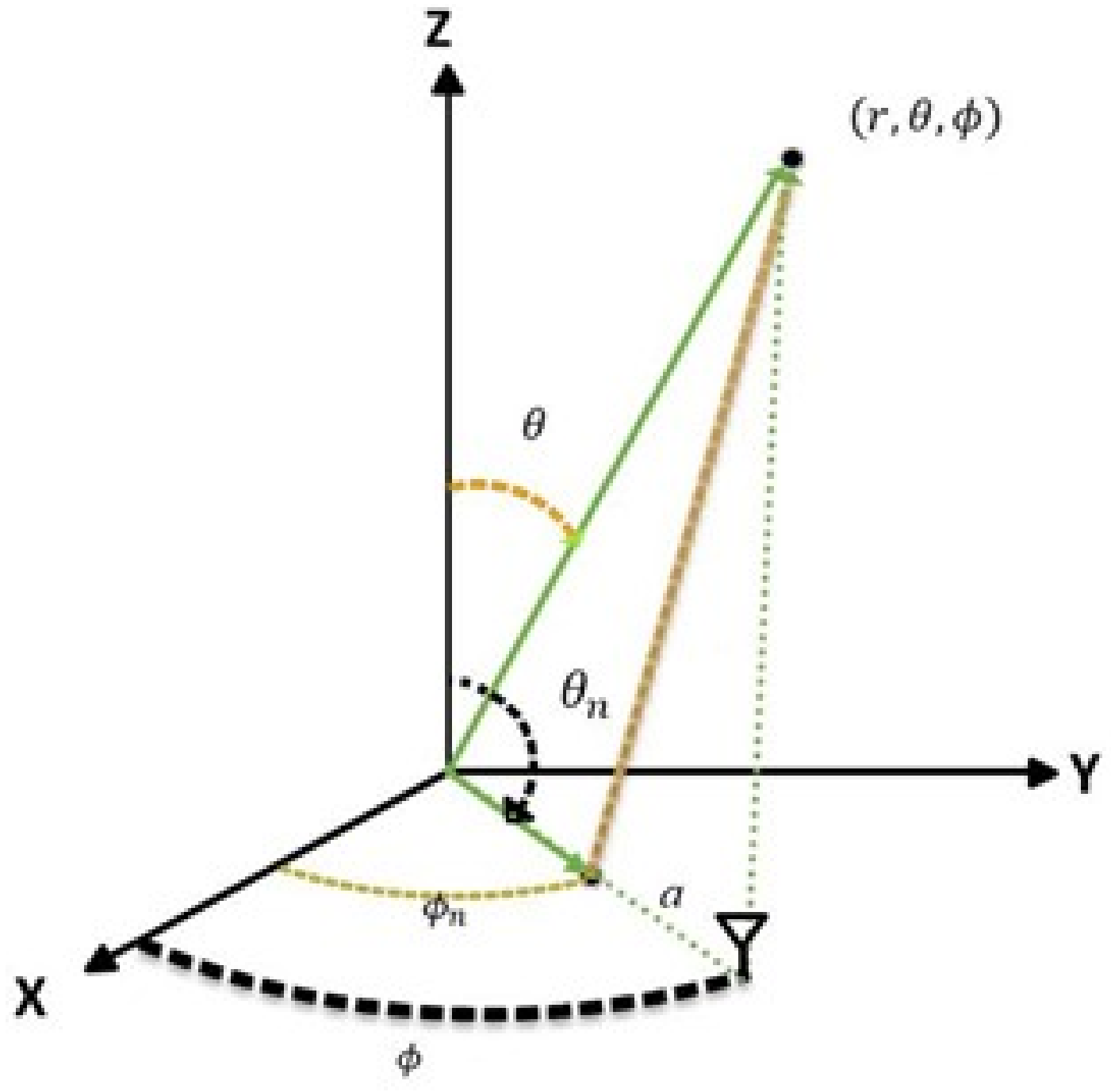
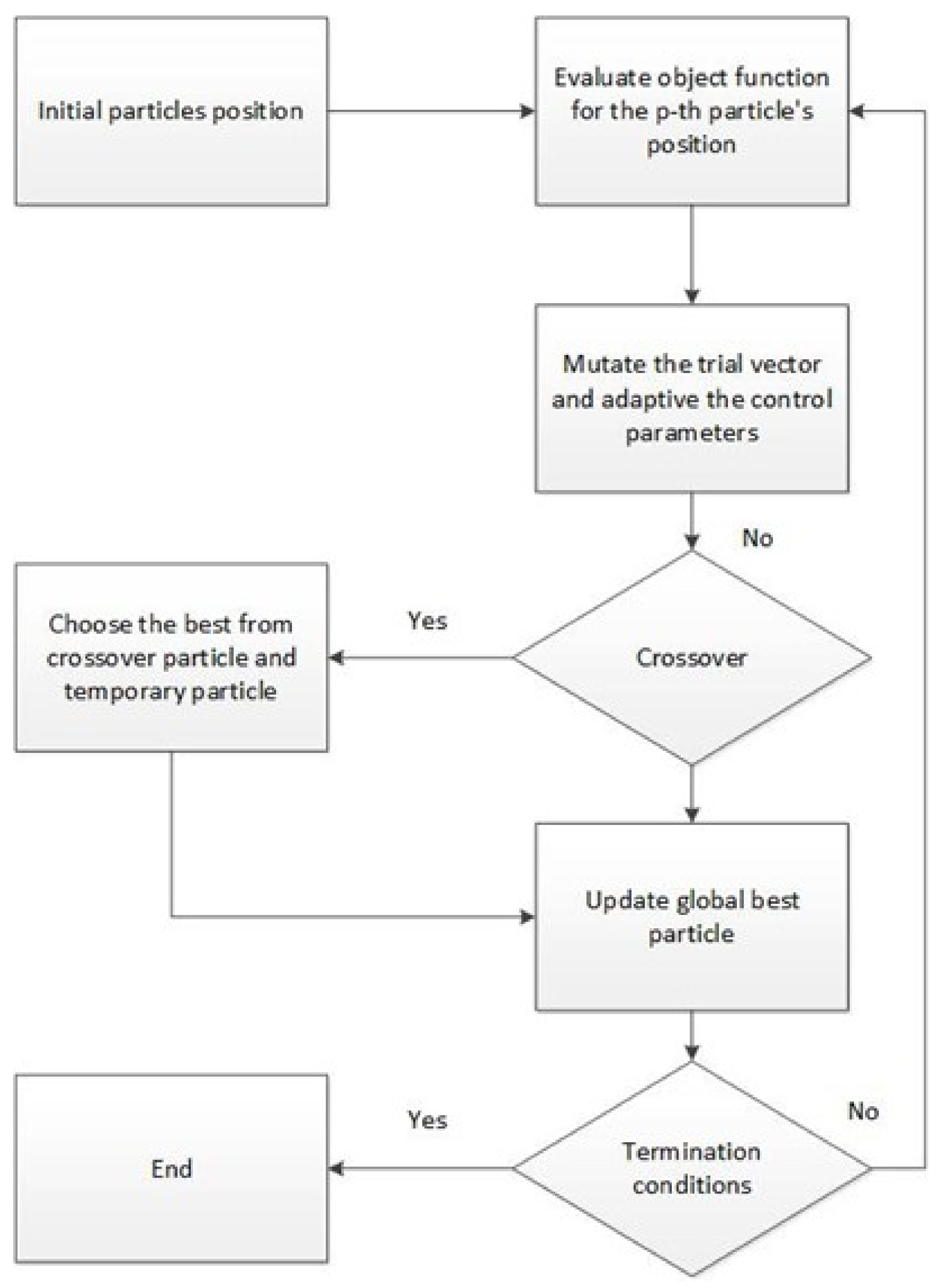
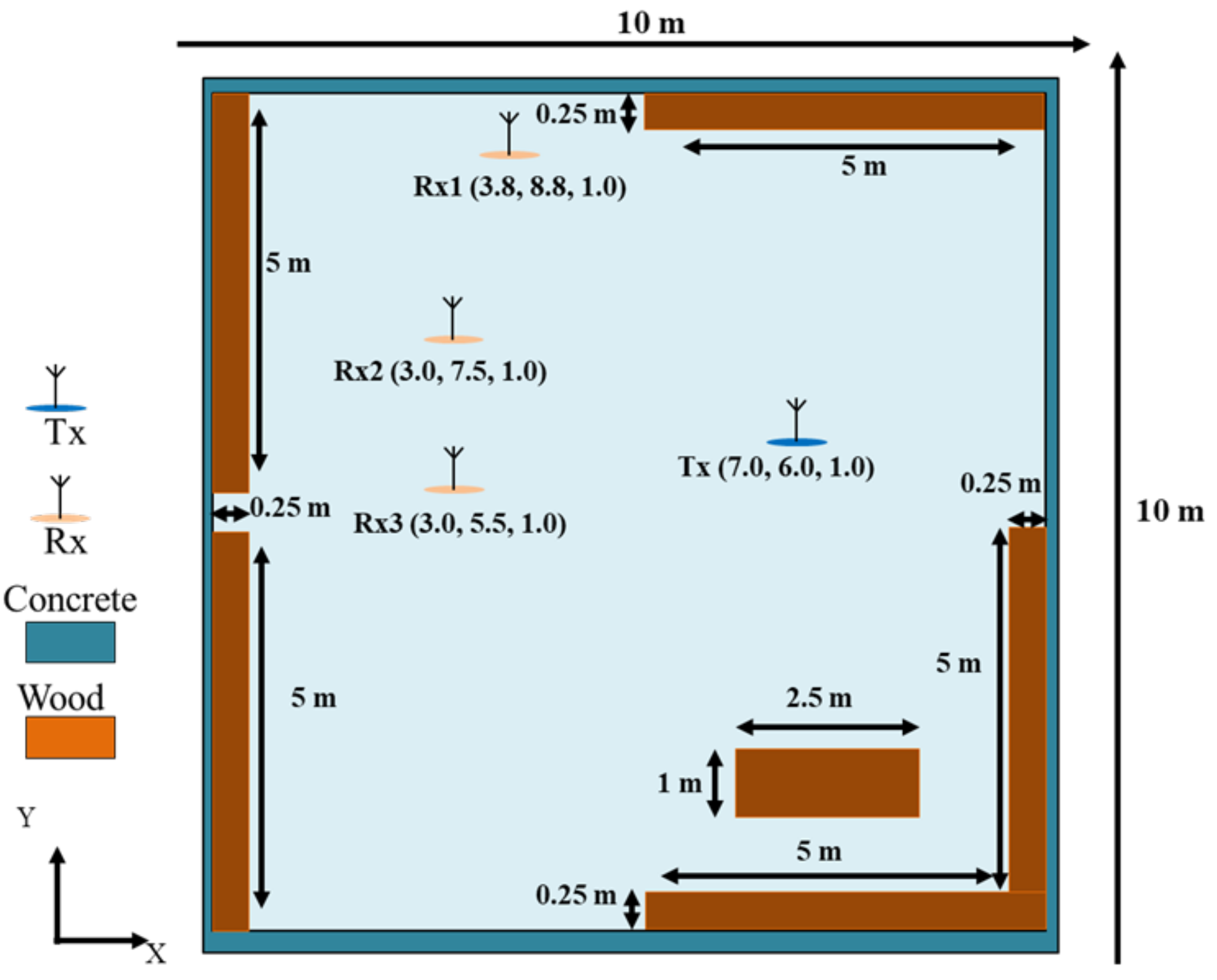
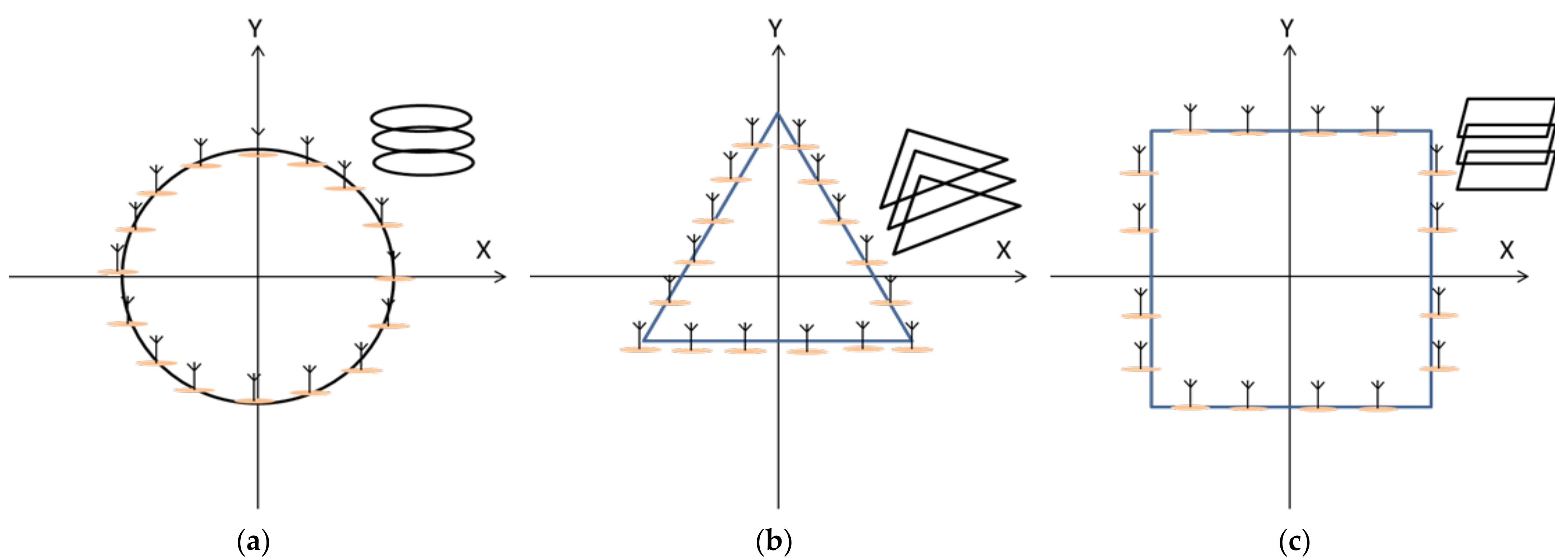

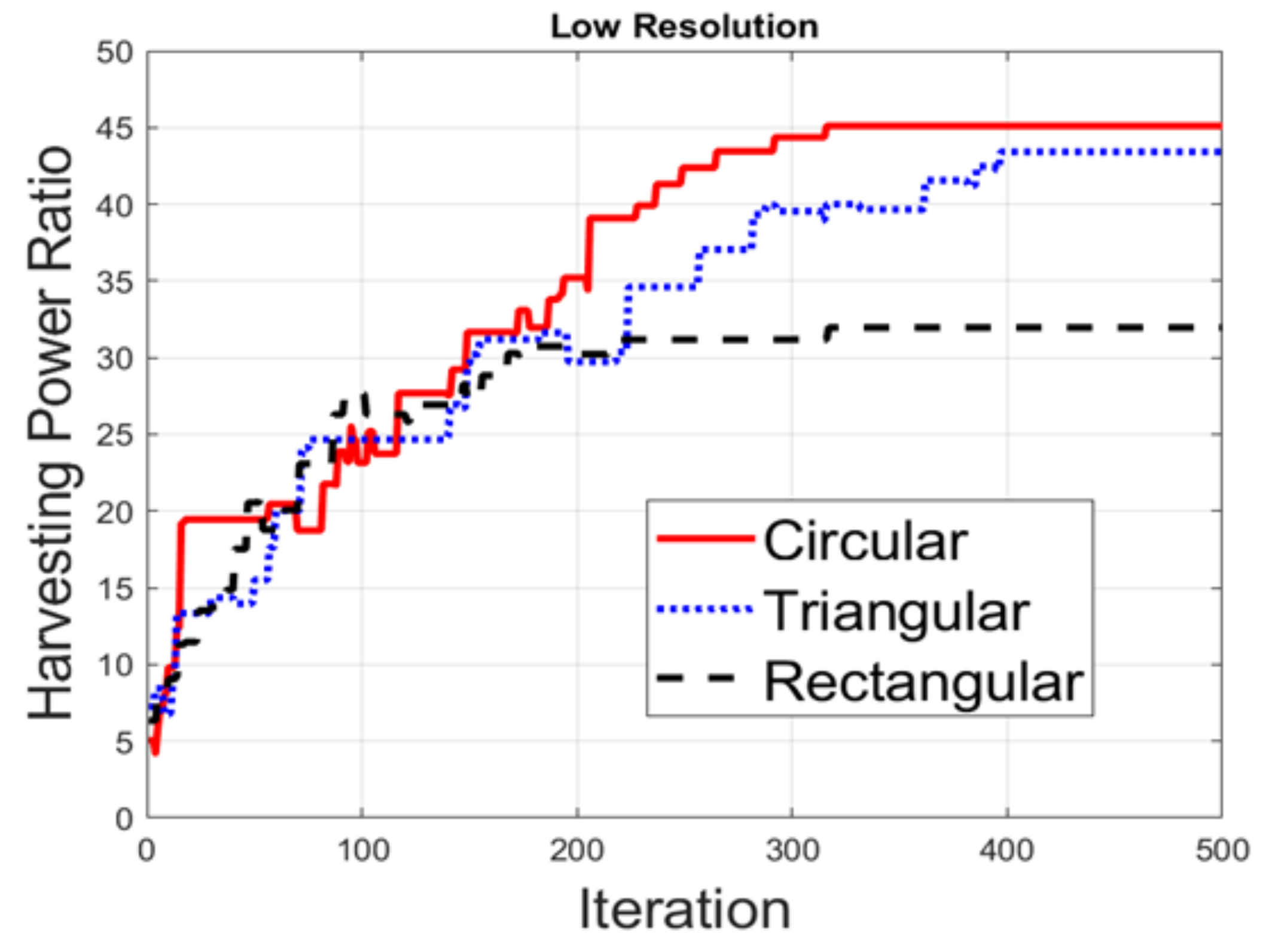
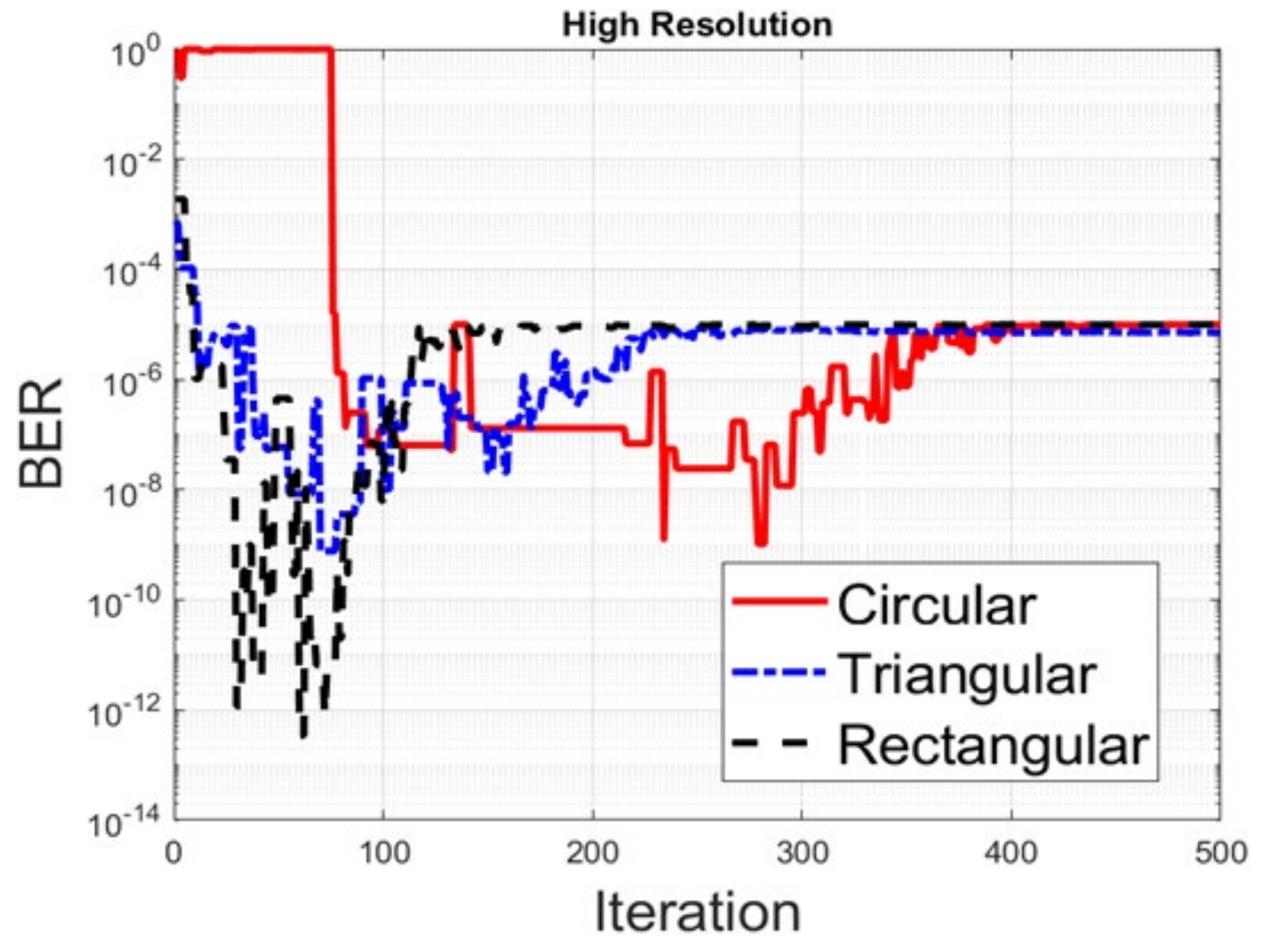
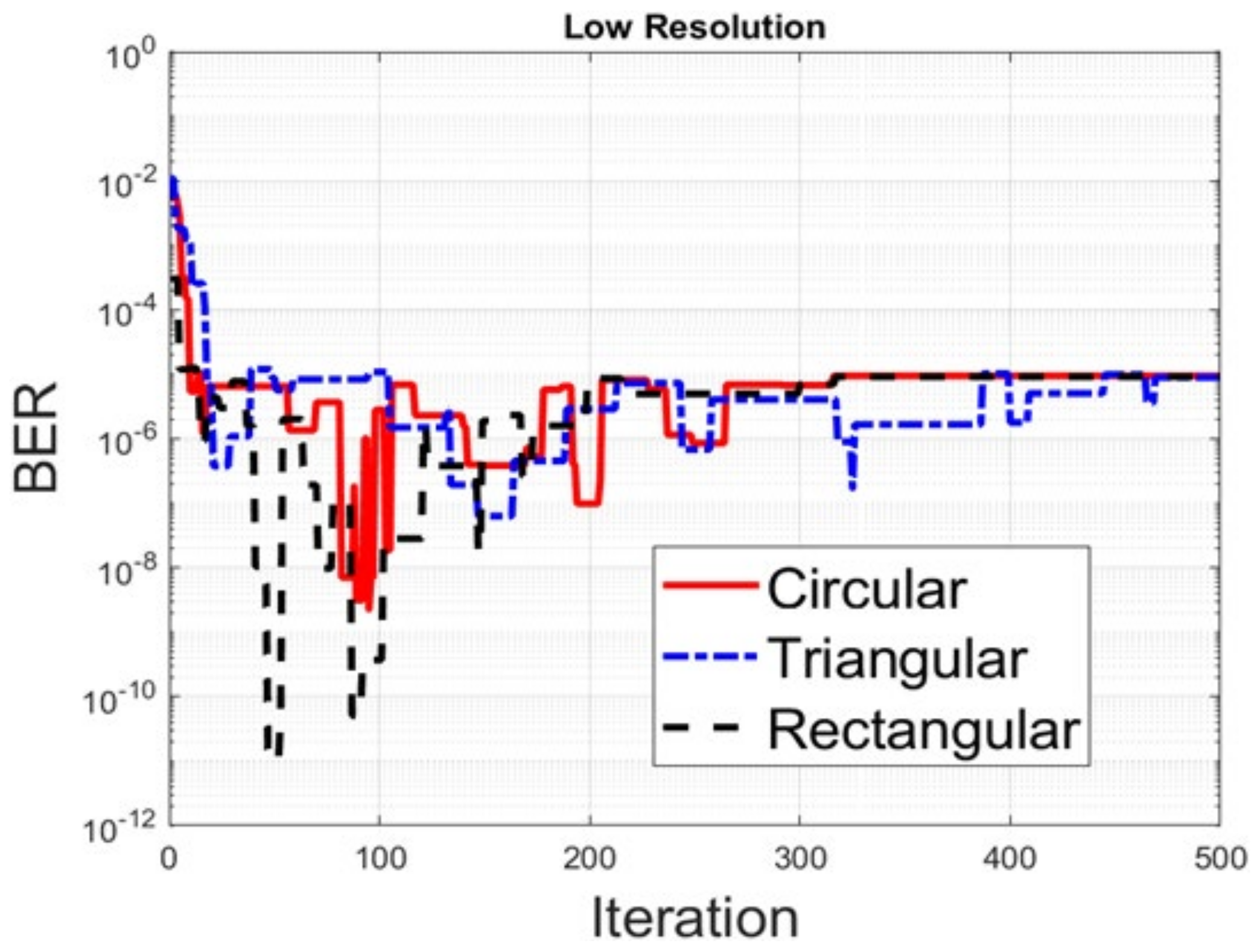




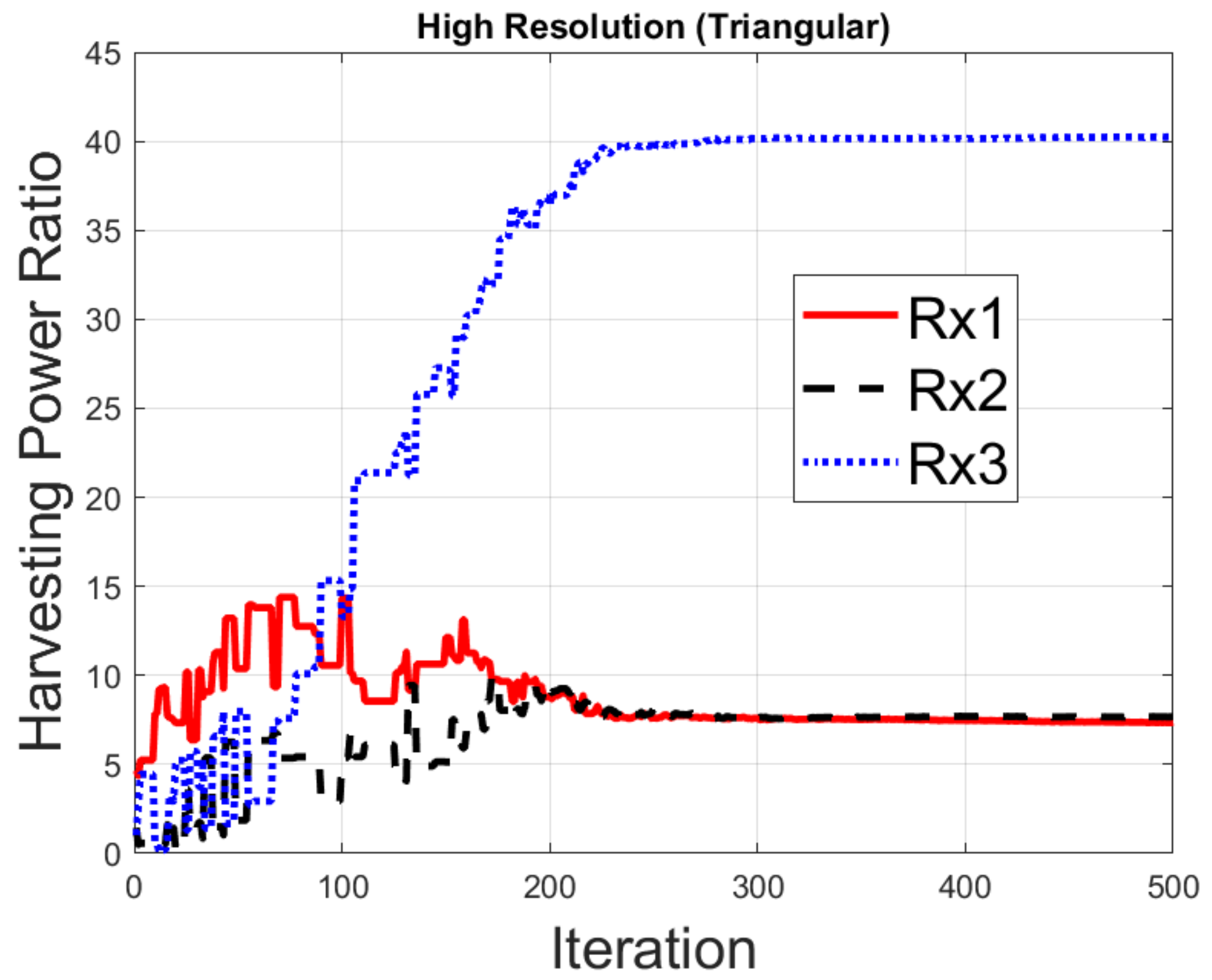

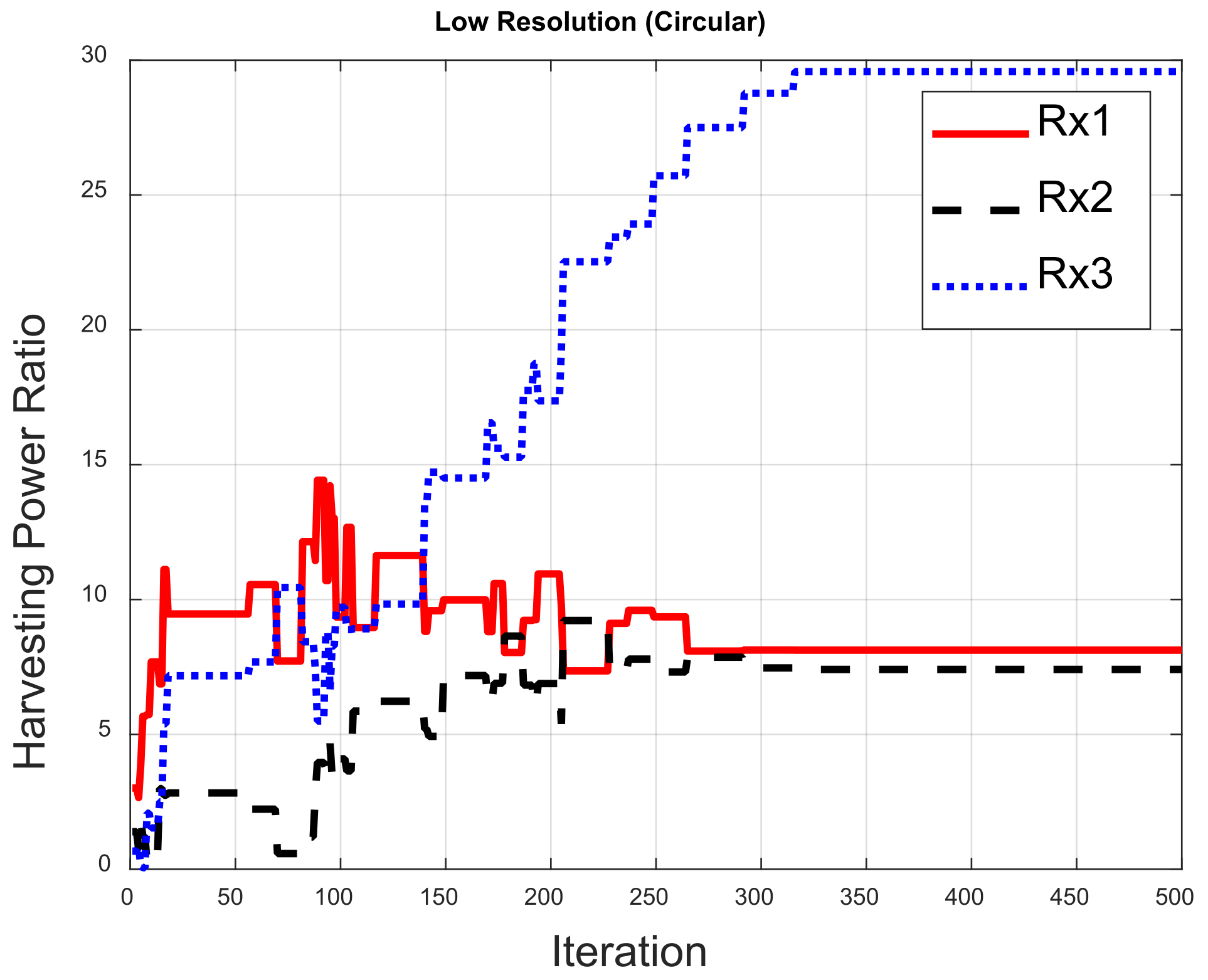
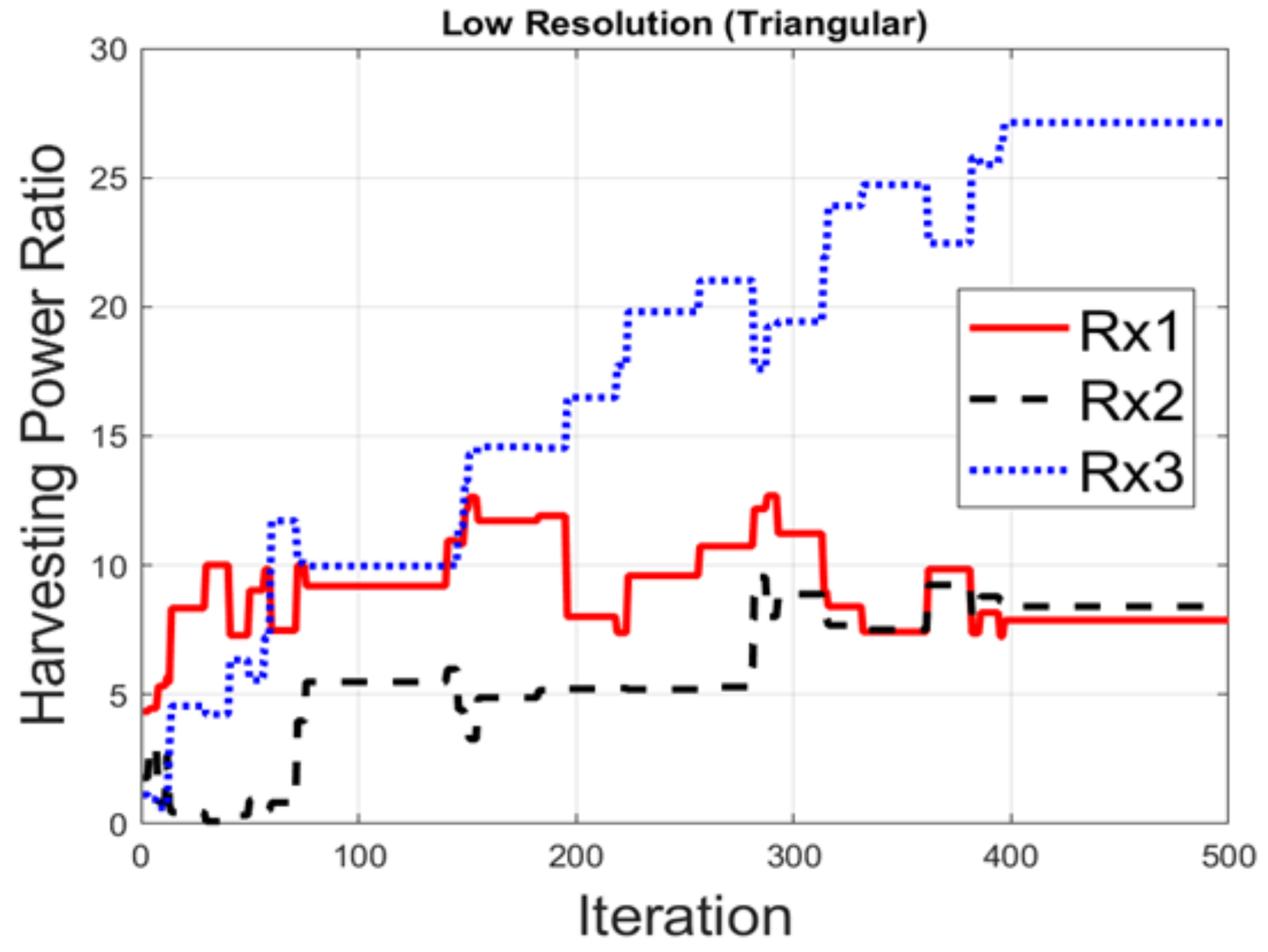
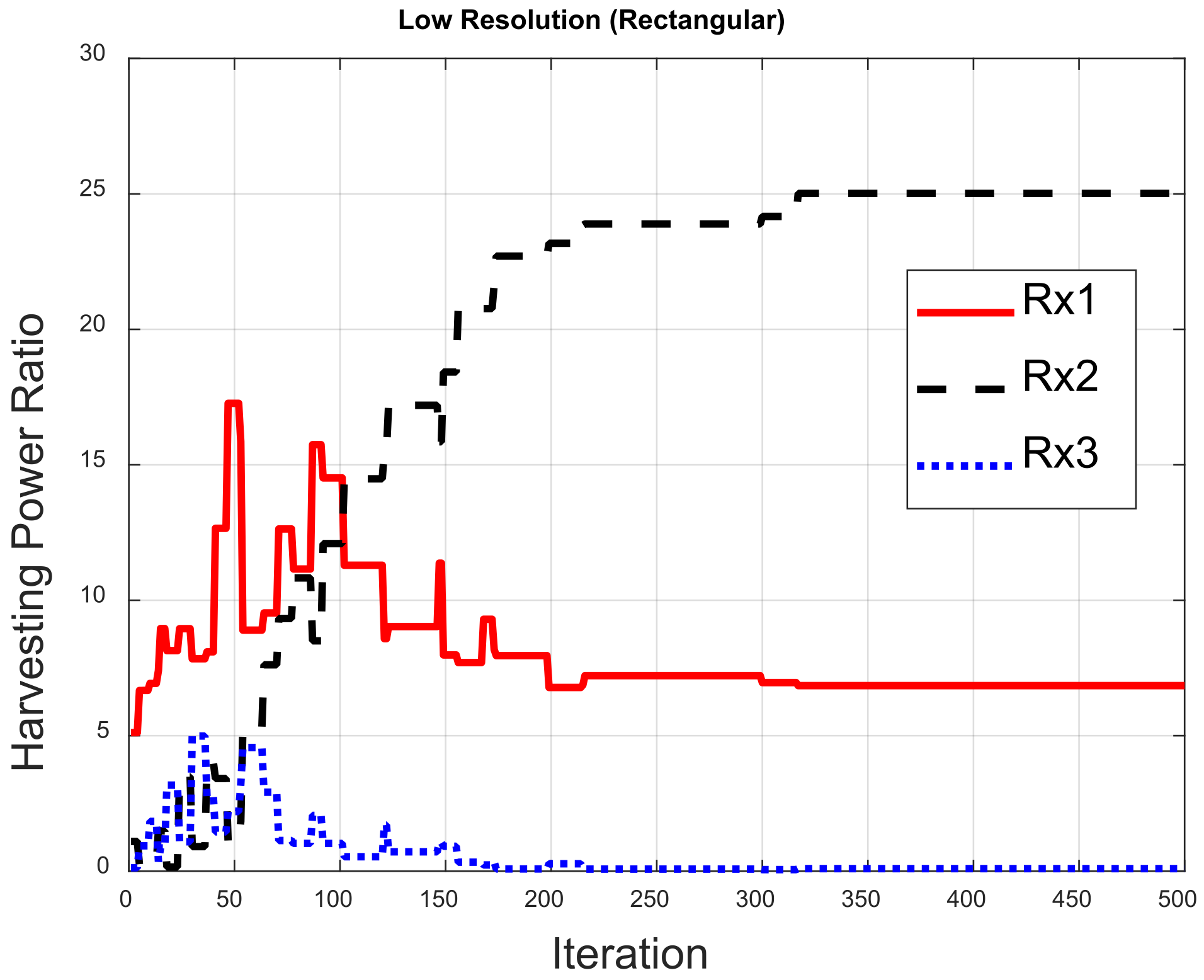
Publisher’s Note: MDPI stays neutral with regard to jurisdictional claims in published maps and institutional affiliations. |
© 2021 by the authors. Licensee MDPI, Basel, Switzerland. This article is an open access article distributed under the terms and conditions of the Creative Commons Attribution (CC BY) license (https://creativecommons.org/licenses/by/4.0/).
Share and Cite
Chiu, C.-C.; Wu, H.-Y.; Chien, W.; Cheng, Y.-T.; Lim, E.H. Optimization of Different Deployments and Resolution of Antenna Arrays in SWIPT. Electronics 2022, 11, 19. https://doi.org/10.3390/electronics11010019
Chiu C-C, Wu H-Y, Chien W, Cheng Y-T, Lim EH. Optimization of Different Deployments and Resolution of Antenna Arrays in SWIPT. Electronics. 2022; 11(1):19. https://doi.org/10.3390/electronics11010019
Chicago/Turabian StyleChiu, Chien-Ching, Hung-Yu Wu, Wei Chien, Yu-Ting Cheng, and Eng Hock Lim. 2022. "Optimization of Different Deployments and Resolution of Antenna Arrays in SWIPT" Electronics 11, no. 1: 19. https://doi.org/10.3390/electronics11010019





